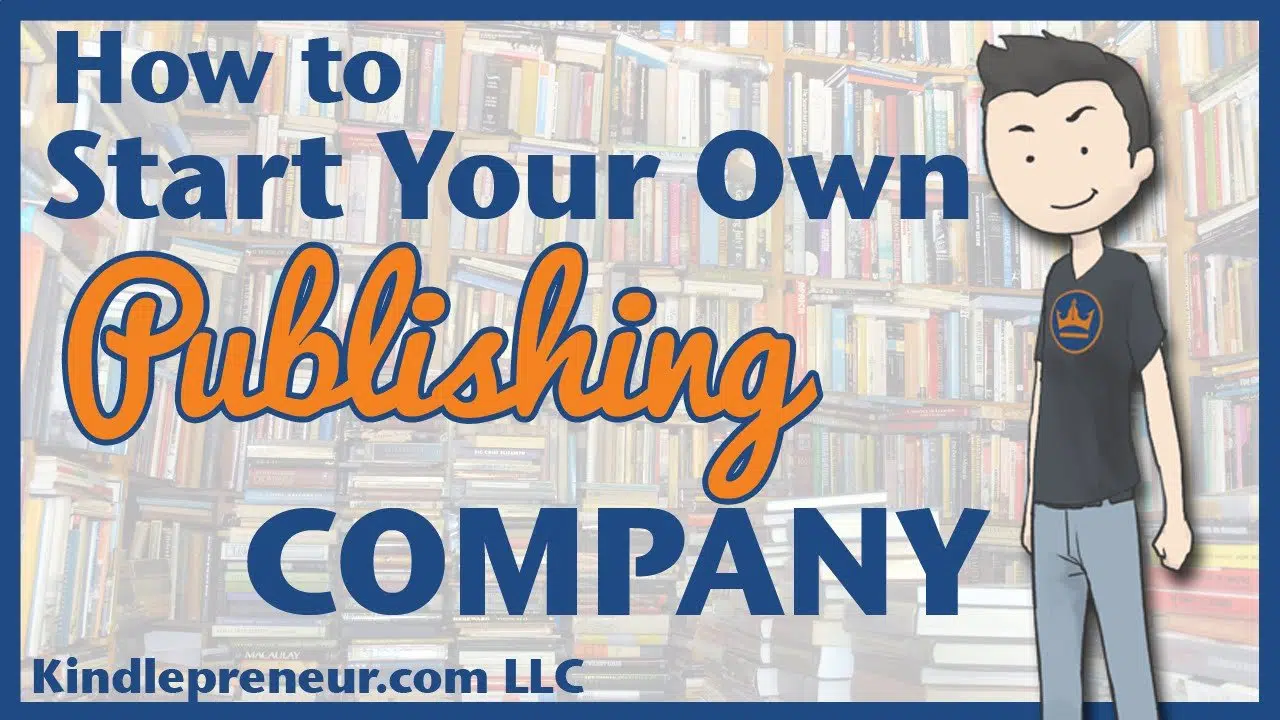Starting a book publishing company may seem daunting, but with the right steps, you can make it happen. First, understand your niche and audience to tailor your offerings. Next, build a detailed business plan outlining goals, budgets, and strategies. Register your business and secure the necessary licenses. Invest in quality editing, design, and marketing to ensure your books stand out. Finally, network with authors and industry professionals to grow your presence.
How to Start a Book Publishing Company
Starting a book publishing company can be an exciting and fulfilling venture, especially for those passionate about literature and storytelling. It involves many steps and requires careful planning. If you’re also curious about how to send your book to a publisher, this guide will help you understand that process as well. This guide will cover everything from setting up your own book publishing company to growing your business.
Understanding the Book Publishing Industry
Before diving into the process of starting a book publishing company, it’s important to understand how the industry works.
What is Book Publishing?
Book publishing involves the production and dissemination of literature. It includes acquiring manuscripts, editing, designing covers, printing, and distributing books to retailers and readers.
- Traditional Publishing: In this model, publishers take full control of the editing, design, marketing, and distribution processes. Authors usually receive an advance and royalties from sales.
- Self-Publishing: Authors handle most or all aspects of the publishing process themselves or hire freelance professionals. They keep more of the profits but take on more risk.
- Hybrid Publishing: This combines aspects of traditional and self-publishing. Publishers provide some services and authors share in the costs and profits.
Planning Your Book Publishing Company
Research the Market
Research is crucial before starting any business. Understand the competition and identify your target audience.
- Identify Niche Markets: Focus on specific genres or types of books that interest you, such as children’s literature, fantasy novels, or academic texts.
- Analyze Competitors: Look at successful publishers in your chosen niche. Understand what they do well and identify gaps where you can offer something unique.
Write a Business Plan
A well-structured business plan can guide your company’s growth and help secure funding. Your business plan should include:
- Executive Summary: A brief overview of your business goals and strategies.
- Market Analysis: Detailed research about your target market, including demographics and competitors.
- Marketing Plan: Strategies for promoting your books and reaching your audience.
- Financial Plan: Projections for income, expenses, and profitability.
Setting Up Your Company
Legal Structure and Registration
Choose the legal structure of your business. Common structures include:
- Sole Proprietorship: Easy to set up but offers less protection for personal assets.
- Limited Liability Company (LLC): Provides liability protection and is relatively easy to manage.
- Corporation: More complex but offers significant protection and benefits, especially for larger companies.
Once you choose your structure, register your business name and obtain necessary licenses and permits.
Finding a Location
You will need a place for your office. This could be a physical office or a home office. Consider:
- Space for Employees: If you plan to hire staff, ensure there is adequate workspace.
- Storage for Books: You’ll need space to store inventory, especially if you plan to handle physical books.
Setting Up Your Office
Equip your office with the necessary technology and furniture. You will need:
- Computers and software for writing, editing, and design.
- High-speed internet and secure servers for storing data.
- Comfortable furniture for you and any employees.
- Printer and other office supplies.
Acquiring Manuscripts
Building Relationships with Authors
To publish books, you need manuscripts. Start by building relationships with authors. Attend writer’s conferences, join literary groups, and network online.
Submission Guidelines and Acquisitions
Create clear submission guidelines for authors. This includes:
- Types of manuscripts you are looking for.
- Formatting requirements.
- Submission process and timeline.
Set up an acquisitions process to review and select manuscripts. This often involves:
- Initial screening for fit and quality.
- Detailed review and feedback.
- Contract negotiations with authors.
Editing and Production
Editing Process
Editing ensures that the manuscript is polished and ready for publication. The process includes:
- Developmental Editing: Focuses on structure, content, and flow of the manuscript.
- Copyediting: Addresses grammar, syntax, and style.
- Proofreading: Final check for typos and errors.
Design and Layout
A book’s design can significantly impact its appeal. Consider hiring professional designers for:
- Cover Design: A compelling cover is crucial for attracting readers.
- Interior Layout: Ensures the text is readable and well-formatted.
Printing Options
Decide how you will print your books. Options include:
- Print on Demand (POD): Books are printed as orders come in. This reduces upfront costs and risk.
- Offset Printing: Suitable for larger print runs, offering lower cost per unit but requires significant upfront investment.
Marketing and Distribution
Marketing Strategies
Effective marketing drives book sales. Implement strategies such as:
- Author Platforms: Encourage authors to build their own platforms through social media, blogs, and speaking engagements.
- Book Launch Events: Host events online and offline to create buzz around new releases.
- Reviews and Press Releases: Send books to reviewers and media to generate publicity.
- Online Marketing: Use digital advertising, email marketing, and SEO to reach a broader audience.
Distribution Channels
Distribute your books through multiple channels to maximize reach. Options include:
- Online Retailers: Amazon, Barnes & Noble, and other online platforms.
- Bookstores: Work with distributors to get your books into physical stores.
- Direct Sales: Sell books directly through your website.
Managing Royalties and Contracts
Establish a system to handle royalties and contracts. This ensures that authors are paid fairly and on time. Your process should include:
- Clear contracts outlining terms and conditions.
- Accurate tracking of sales and royalties.
- Timely payments and transparent reporting to authors.
Growing Your Publishing Company
Building a Brand
A strong brand helps you stand out in the marketplace. Consider:
- Developing a clear and consistent brand identity.
- Creating a professional website and social media presence.
- Engaging with your audience through newsletters and events.
Expanding Your Offerings
Diversify your offerings to attract more readers and authors. This might include:
- Publishing different genres or formats, such as ebooks or audiobooks.
- Offering additional services like editing or marketing support.
Networking and Partnerships
Build relationships with other industry professionals. Attend conferences, join publishing associations, and collaborate with other businesses.
Starting a book publishing company requires dedication, hard work, and a love for books. By following this guide, you can navigate the complexities of the industry and build a successful publishing business. Remember, each book you publish contributes to the world of literature and the joy of reading.
Frequently Asked Questions
What legal requirements do I need to consider when starting a book publishing company?
When starting a book publishing company, you need to address several legal requirements. First, register your business name and choose a suitable business structure such as an LLC or corporation. Obtain an Employer Identification Number (EIN) from the IRS for tax purposes. You may also need specific licenses or permits depending on your location. Make sure to understand copyright laws, as you’ll be handling intellectual property. It’s advisable to consult with a legal expert to ensure compliance with all relevant regulations.
How do I build a strong catalog of books for my publishing company?
To build a strong catalog, start by identifying your target market and the genres you want to focus on. Reach out to new and established authors who align with your vision. Consider hosting manuscript submissions through your website. Attend literary conferences and networking events to discover talented writers. Evaluate submissions carefully and invest in quality editing, cover design, and marketing to ensure each book meets high standards. A diverse yet focused catalog can help you establish a strong market presence.
What should I include in a business plan for a book publishing company?
A comprehensive business plan for a book publishing company should cover several key areas. Include an executive summary that outlines your vision and goals. Detail your market analysis, identifying your target audience and competitors. Describe your organizational structure and the roles of key team members. Outline your catalog development strategy and marketing plans. Financial projections, including startup costs, revenue forecasts, and funding requirements, are crucial. A solid business plan serves as a roadmap for your company’s growth and success.
How do I secure funding for my book publishing company?
Securing funding for your book publishing company can involve various strategies. Start by bootstrapping, using personal savings to cover initial costs. Consider applying for small business loans or grants geared toward publishing or arts initiatives. Exploring angel investors or venture capital can be an option, though it may require giving up some equity. Crowdfunding platforms like Kickstarter can help raise funds while also generating early interest in your projects. Ensure you present a compelling business plan to potential investors.
What are the key marketing strategies for promoting books published by my company?
Effective marketing strategies for promoting books include a mix of traditional and digital approaches. Develop a strong online presence through a professional website and active social media profiles. Utilize email marketing to reach out to readers with updates and promotions. Leverage book reviews and author interviews on blogs and podcasts. Participate in book fairs and literary events. Consider offering promotional deals or limited-time discounts to attract new readers. Collaborating with influencers and book clubs can also increase visibility and sales.
Final Thoughts
Starting a book publishing company involves several key steps. Research the industry, create a solid business plan, and secure financing. Build a strong team to handle editorial, design, and marketing tasks. Establish relationships with authors, printers, and distributors to ensure a smooth publishing process. Utilize digital tools to manage your workflow and market your books effectively. By focusing on these essential steps, you can successfully start a book publishing company and bring compelling stories to readers around the world.

